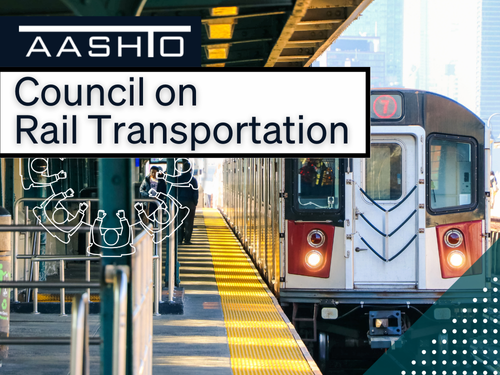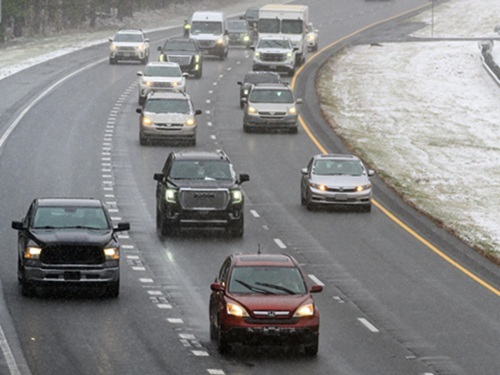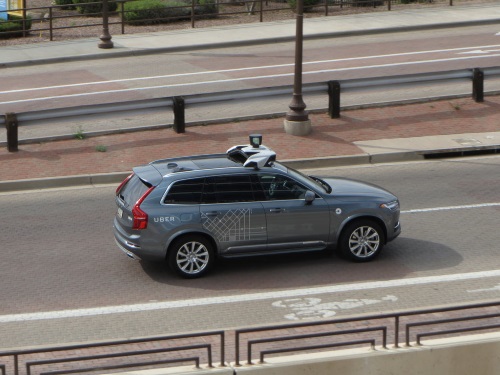The National Highway Traffic Safety Administration published the initial round of data it has collected on autonomous vehicle or AV operations this week. The agency began collecting that data via a Standing General Order or SGO issued in June 2021.
[Above photo by NHTSA]
The agency issued two reports based on its initial round of AV data analysis – a nine-page summary on Society of Automotive Engineers or SAE Level 2 advanced driver assistance systems or ADAS, with eight-page summary on SAE Levels 3-5 automated driving systems or ADS. Going forward, NHTSA said it plans to release AV data updates monthly.
“The data released today are part of our commitment to transparency, accountability and public safety,” noted Steven Cliff, NHTSA’s administrator, in a statement.

“New vehicle technologies have the potential to help prevent crashes, reduce crash severity and save lives, and [we are] interested in fostering technologies that are proven to do so; collecting this data is an important step in that effort,” he said.
“As we gather more data, NHTSA will be able to better identify any emerging risks or trends and learn more about how these technologies are performing in the real world,” Cliff added.
Some initial observations from the data show that since reporting requirements began, one crash reported for an ADS-equipped vehicle resulted in serious injuries, and 108 of the crashes resulted in no injuries. Of the 130 reported crashes for ADS-equipped vehicles, 108 involved collisions with another vehicle, and 11 involved a vulnerable road user, such as a pedestrian or cyclist.
For vehicles with SAE L2 ADAS, the data show that alleged serious injuries or a fatality occurred in 11 of the 98 crashes. Of the reported crashes for SAE L2 ADAS, at least 116 of the collisions were with another vehicle, and at least four involved a vulnerable road user.

The agency said this data reflects a set of crashes that automakers and operators reported to NHTSA since it issued its SGO.
While not comprehensive, the data is important and NHTSA said it offers “immediate information” about crashes that occur with vehicles that have various levels of automated systems deployed at least 30 seconds before the crash occurred.
The agency noted its SGO requires for the first time that manufacturers and operators of vehicles equipped with SAE L2 ADAS or SAE Levels 3-5 ADS report to NHTSA certain crashes that occur with ADAS or ADS systems engaged. The SGO is a first step toward helping NHTSA take a more “data-driven approach” to ensuring the safety of AV technology while helping educate consumers and build confidence in ADAS and ADS technology.
To that end, the American Association of State Highway and Transportation Officials published a policy paper in October 2021 outlining the ten key policy principles needed to help foster broader deployment of such connected and automated vehicles or CAVs – a paper intended to be a “living document,” reviewed and updated every year to reflect changes in technology and policy.

“To safely advance and deploy CAVs and Cooperative Automated Transportation [CAT] technologies, a national strategy must include innovative and flexible Federal infrastructure investment, funding for CAV pilots and deployments that leverage public–private partnerships for digital and physical infrastructure,” AASHTO noted in the paper.
“Advancing CAV requires interoperable, reliable, and consistent infrastructure, a cohesive national vision, collaborative partnerships, funding, and clear policy,” AASHTO emphasized. “The vision and related readiness strategy must be collaborative, with active input from infrastructure owners and operators or IOOs, industry, communities, local governments, and other transportation stakeholders, representing the populations their respective transportation systems serve.”
 Nation
Nation
Registration Open for AASHTO’s Winter Rail Meeting
December 19, 2025 Nation
Nation

